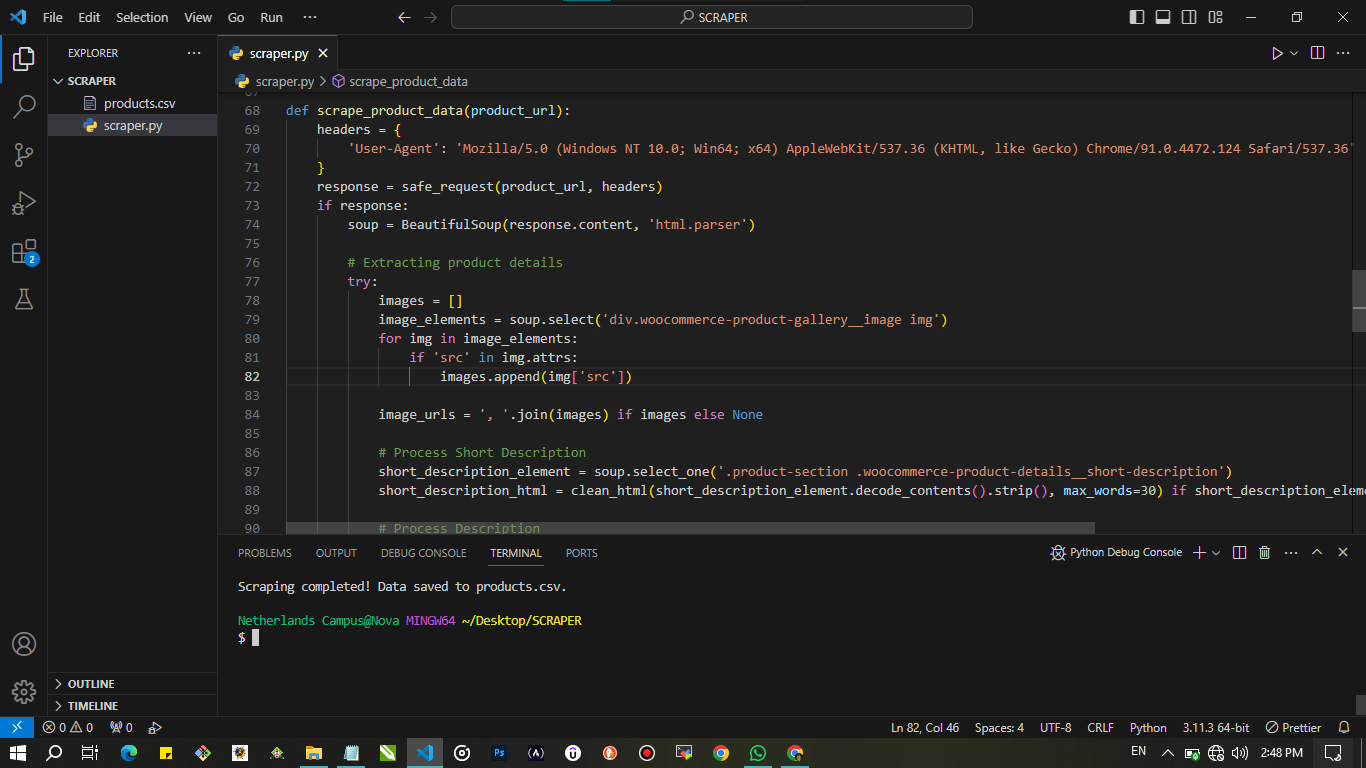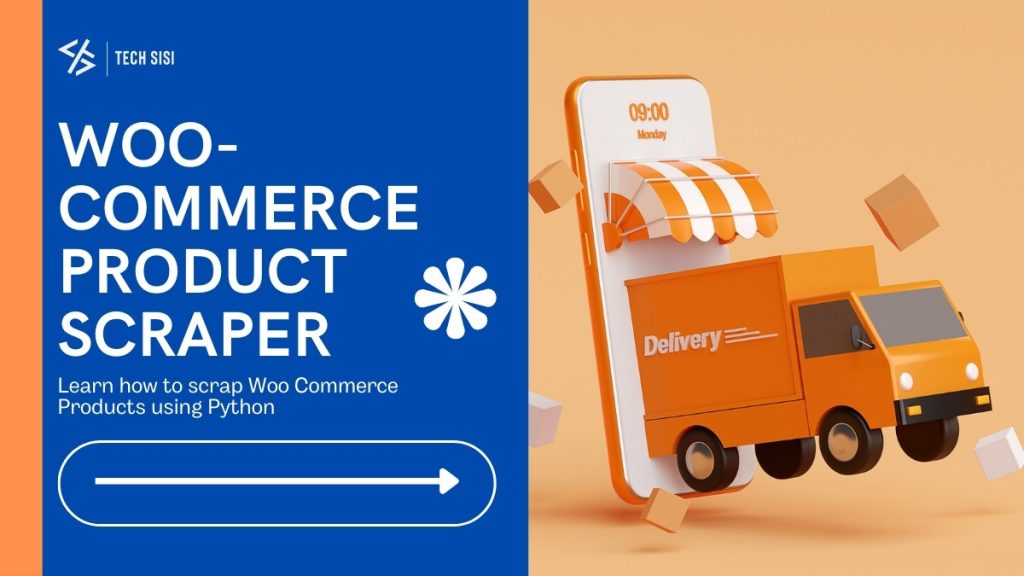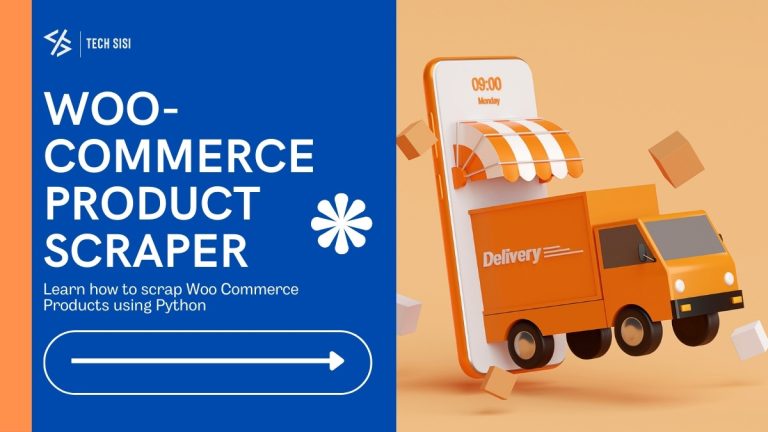WooCommerce is one of the most popular platforms for setting up online stores. However, managing and scraping product data from a WooCommerce store can be a daunting task, especially when dealing with a large inventory. In this blog post, we’ll explore how to create a WooCommerce Scraper using Python, enabling you to automate the extraction of product details efficiently.
Whether you’re migrating products to a new platform, conducting competitor analysis, or simply backing up your data, a WooCommerce scraper can save you countless hours of manual work. Let’s dive into the process and explore the key steps involved.
Why Use a WooCommerce Scraper?
A WooCommerce Scraper allows you to:
- Automate Data Extraction: No need to manually copy product details; a scraper does it all for you.
- Save Time and Effort: Speed up tasks that would otherwise take hours or even days.
- Enhance Data Accuracy: Eliminate human errors by automating the data retrieval process.
- Customizable to Your Needs: Tailor the scraper to extract specific information based on your unique requirements.
Now, let’s break down the process of building your WooCommerce scraper using Python.
Getting Started with WooCommerce Scraper in Python
1. Setting Up the Environment
To begin, you’ll need to set up your Python environment. Ensure you have Python installed on your machine, along with essential libraries such as requests, BeautifulSoup, and pandas. You can install these using pip:
pip install requests beautifulsoup4 pandas2. Crafting the WooCommerce Scraper
The core of your WooCommerce scraper is the Python script that handles requests, processes HTML content, and extracts product data. Below is an overview of the main components of the scraper:
- Safe Request Function: Handles HTTP requests with retry logic to ensure successful data retrieval.
- HTML Cleaning Utility: Processes and cleans the HTML content to extract meaningful data.
- Product Data Scraping: Extracts product details such as names, prices, descriptions, and images.
For the complete code, you can visit my GitHub repository.
3. Extracting Product Data
The WooCommerce scraper works by sending requests to the product pages, parsing the HTML content using BeautifulSoup, and extracting the desired information. Here’s a snippet of the code that demonstrates how to scrape product data:
from bs4 import BeautifulSoup
from .request_utils import safe_request
from .html_utils import clean_html
def scrape_product_data(product_url):
headers = {
'User-Agent': 'Mozilla/5.0 (Windows NT 10.0; Win64; x64) AppleWebKit/537.36 (KHTML, like Gecko) Chrome/91.0.4472.124 Safari/537.36'
}
response = safe_request(product_url, headers)
if response:
soup = BeautifulSoup(response.content, 'html.parser')
# Extraction logic hereThis function makes a safe request to the product URL, processes the HTML, and extracts relevant details such as product name, price, description, and images. The extracted data is then stored in a structured format, such as a CSV file, for further use.
4. Running the Scraper
Once your code is ready, running the WooCommerce scraper is as simple as executing the Python script. The scraper will loop through all product URLs, extract the necessary data, and save it to a file for easy access.
python main.pyThe output will be a CSV file containing all the scraped product details, which you can then use for your specific needs.

Why Choose This WooCommerce Scraper?
This WooCommerce scraper is designed with efficiency and customization in mind. By leveraging Python’s powerful libraries, you can easily modify the code to suit your specific requirements. Whether you need to scrape thousands of products or just a few, this scraper provides a robust solution for automating data extraction.
Key Features of This WooCommerce Scraper:
- Handles Large Data Volumes: Efficiently scrape thousands of products without performance issues.
- Customizable Data Extraction: Tailor the scraper to extract only the data you need.
- Error Handling: Built-in retry logic ensures reliable data retrieval.
- SEO-Friendly Data: Extract product information that’s ready to be used for SEO purposes.
For the full source code and more detailed instructions, check out the GitHub repository.
Frequently Asked Questions (FAQ)
1. What is a WooCommerce Scraper?
A WooCommerce Scraper is a tool or script that automates the extraction of product data from a WooCommerce store, including details like product names, prices, descriptions, and images.
2. Is the WooCommerce Scraper customizable?
Yes, the WooCommerce Scraper code is fully customizable. You can modify it to extract specific data, handle different store layouts, or save the data in various formats.
3. Do I need programming skills to use this WooCommerce Scraper?
Basic knowledge of Python is recommended to use and modify the scraper. However, the code is well-documented, making it easier for beginners to understand and implement.
4. How do I handle large WooCommerce stores with thousands of products?
This WooCommerce scraper is designed to handle large volumes of data efficiently. The code includes error handling and retry logic to ensure that all products are scraped successfully, even from large stores.
5. Where can I find the WooCommerce Scraper code?
You can find the complete source code for the WooCommerce Scraper on my GitHub repository.
By following this guide, you’ll be well on your way to building a powerful and efficient WooCommerce scraper that meets your specific needs. Whether you’re managing a single store or multiple stores, this tool will help you streamline your workflow and ensure that you have accurate, up-to-date product data at your fingertips.
-

Precious Gabraels (Precious Okechukwu Nwosu) is a tech enthusiast. A professional Web Developer, Blogger, SEO Specialist, and Digital Marketer. He is also a co-founder of Nova Vamp Web Design Consultancy which specializes in the digitization of businesses.
View all posts













